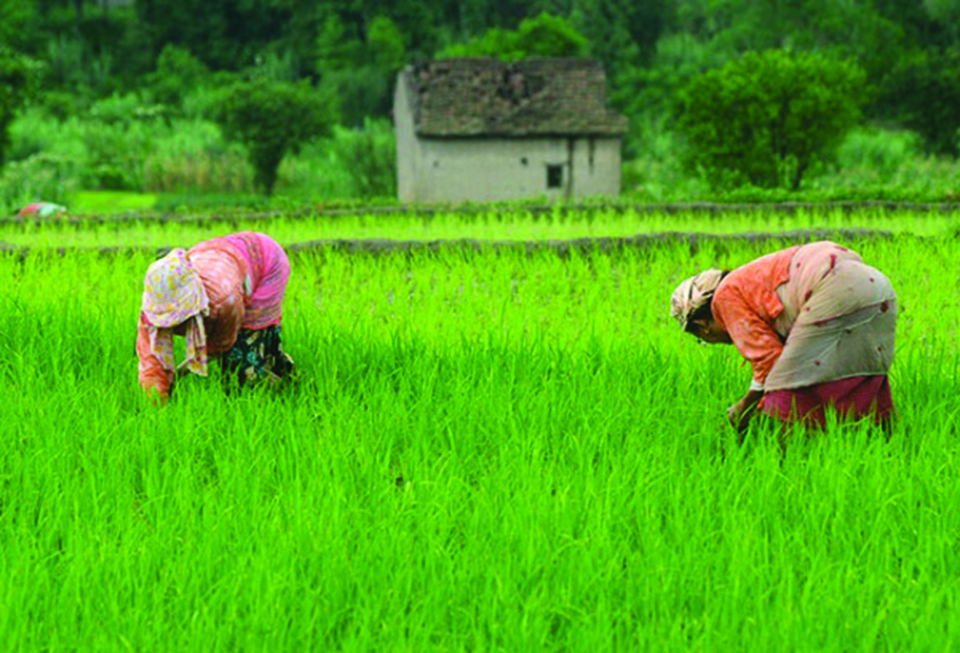
Agriculture is the main source of food, income, and employment for the majority contributing approximately one-third of total GDP in Nepal. Nepal has great potential in tea, ginger, cardamom, and sugarcane production, which have high demand in the international market. Rice, wheat, and maize are the main food crops, and mustard, soybean and sunflower are the major oilseeds. Potato, lentil, tobacco and jute are the major cash crops, which have high demand in local market. GRNC is providing trainings to the farmers of different districts as well as providing the materials for the agricultural production. The trained farmers have grown coffee, oranges, vegetables which are also exported to different parts of Nepal. In relation to crop farming and livestock farming, the term “agriculture” may be defined as: the art and science of growing plants and other crops and the raising of animals for food, other human needs, or economic gain. The words “growing” and “raising” are descriptive of enterprise, activity or practice. It has two main divisions: plant or crop production and animal or livestock production; and its ultimate purpose is for food production, other human needs such as clothing, medicines, tools, artistic display and dwelling, or for economic gain or profit.
Some Definitions of Agriculture
- Agriculture includes farming in all branches and, among other things, includes the cultivation and tillage of soil, dairying, the production, cultivation, growing and harvesting of any agricultural and horticultural commodities, the raising of livestock or poultry, and any practices performed by a farmer on a farm as an incident to or in conjunction with such farming operations, but does not include the manufacturing or processing of sugar, coconuts, abaca, tobacco, pineapple or other farm products
- Agriculture, Agricultural Enterprise or Agricultural Activity means the cultivation of the soil, planting of crops, growing of fruit trees, including the harvesting of such farm products, and other farm activities and practices performed by a farmer in conjunction with such farming operations done by persons whether natural or juridical.
- “Farming” or “agriculture” shall include farming in all of its branches and the cultivation and tillage of the soil, dairying, the production, cultivation, growing and harvesting of any agricultural, aqua cultural, floricultural or horticultural commodities, the growing and harvesting of forest products upon forest land, the raising of livestock including horses, the keeping of horses as a commercial enterprise, the keeping and raising of poultry, swine, cattle and other domesticated animals used for food purposes, bees, fur-bearing animals, and any forestry or lumbering operations, performed by a farmer, who is hereby defined as one engaged in agriculture or farming as herein defined, or on a farm as an incident to or in conjunction with such farming operations, including preparations for market, delivery to storage or to market or to carriers for transportation to market.
- Agriculture is the science of cultivating the soil, harvesting crops, and raising livestock and also as the science or art of the production of plants and animals useful to man and in varying degrees the preparation of such products for man’s use and their disposal.
- Agriculture includes farming in all its branches and among other things includes the cultivation and tillage of the soil, dairying, the production, cultivation, growing, and harvesting of any agricultural or horticultural commodities, the raising of livestock or poultry, and any practices performed by a farmer on a farm as an incident to or in conjunction with some farming operations, but does not include the manufacturing or processing of sugar, coconuts, abaca, tobacco, pineapples or other farm products
- Agriculture often involves the cultivation of the soil to grow plants and the raising of animals for human needs. The words “crops” and “livestock” are also used. However, both words are special or technical terms. “Crops” should clearly mean plants (with exceptions, as in mushroom) which are useful to man while “livestock” applies to both domesticated animals and poultry. However,cultivation which essentially involves disturbing the soil does not apply to crop production systems using soil-less media, as in hydroponics.Branches of AgricultureAgriculture is firstly divided into two parts. Those areA. Plant sciencesB. Animal sciencesBoth Plant science and Animal science are divided into different categories:A. For Plant sciences
- Agronomy: Agronomy deals with the soil management and field crops like cereal crop, oil crop etc.
- Horticulture: Horticulture deals with the cultivation of fruits, vegetables, flowers and ornamental crop
- Agro-forestry: Agro-forestry deals with the woody perennials are grown in association with agricultural crops or pasture, sometimes with livestock.
- Agricultural Engineering: Agricultural engineering involves knowledge of farm machines or equipments and their proper use and improvement.
- Agricultural Economics: Agricultural Economics which deals with the total value of all final goods and services produced and business end of farming.
- Plant Pathology: Plant pathology deals with the disease of plant, their causes and their management.
- Entomology: Entomology deals with insects and their causes and their control measure.
- Soil Science: Soil science deals with soil formation, classification and their management.
- Agricultural Chemistry: Agricultural chemistry deals with the plant nutrition and different type chemical formulation for controlling the pest.
- Agricultural Extension: Agricultural extension deals the changes in the behavior of client system engaged in farming as a profession.
- Agricultural Botany: Agricultural botany deals with the plants morphology and physiology.
- Genetics and Plant Breeding: Genetics deals about heredity and variation. Plant breeding deals about to produce improved variety.
